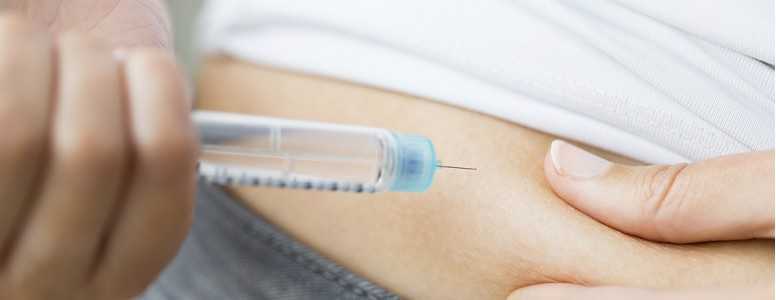A lipid, created by the body, in response to cold temperatures helps to lower blood glucose levels, an international study has found.
Following experiments on mice, researchers speculate that the discovery of this function of 12-HEPE could potentially lead to the development of new treatments for type 2 diabetes.
The study, led by the University of Campinas’s Biology Institute (IB-UNICAMP) based in São Paulo, Brazil, also showed that a urinary dysfunction drug increases levels of 12-HEPE released into the blood.
The body creates types of adipose tissue, including white adipose tissue, which stores excess energy as fat, and also brown adipose tissue, which is responsible for converting energy from food into heat, contributing to thermal regulation.
Different lipids are created by the brown adipose tissue in response to cold temperatures, including the lipid 12-HEPE. The blood glucose-lowering properties of this lipid were unknown until this research.
The study involved two groups of obese mice that were injected with a concentrated glucose solution. One group of mice were treated with 12-HEPE and the other without treatment.
The results demonstrated lower blood glucose levels in the mice treated with 12-HEPE. The researchers state this was possible as 12-HEPE promoted glucose uptake into skeletal muscle as well as brown adipose tissue, helping with adaptation to cold temperatures.
Another study in humans also suggested the potential of a physiological role for 12-HEPE. Participants were either classed as lean and healthy, overweight or obese, with the results of blood samples revealing that the lean group had more 12-HEPE in their bloodstream compared to the overweight group and much more than the obese group.
In the human study, some of the healthy and lean participants also received doses of mirabegro, normally taken as a treatment for overactive bladder, and another group was given a placebo. Mirabegron was chosen as it can activate brown adipose tissue. The results revealed that the participants given mirabegron had higher levels of 12-HEPE in the blood.
Lead researcher Luiz Osório Leiria said: “Mirabegron has several effects, some of which are undesirable. It activates the release of various other lipids and does not specifically target glucose reduction. An omega-3 lipid such as 12-HEPE would have a far more desirable toxicological profile.”
The study was carried out while the scientist was on a research internship at Joslin Diabetes Center. The research was published by the journal Cell Metabolism.


